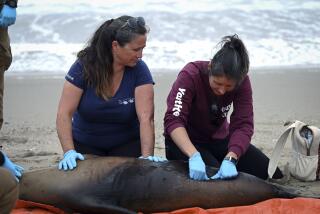Gray whales are in the midst of an ‘unusual mortality event,’ NOAA says
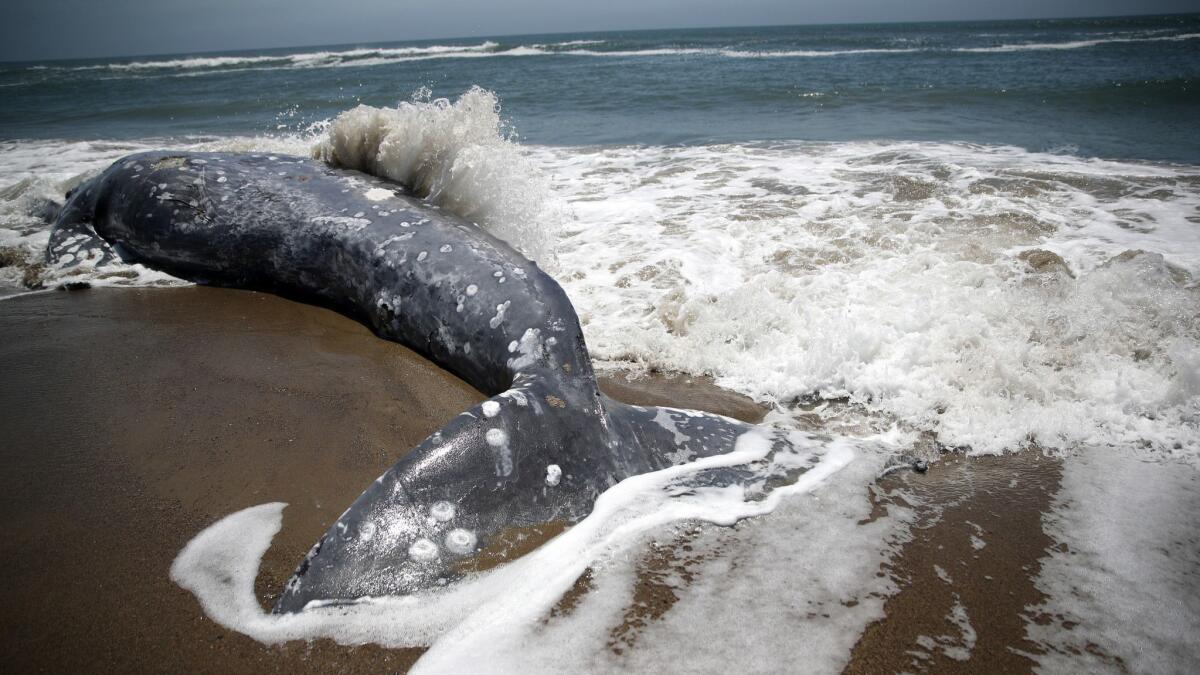
The National Oceanic and Atmospheric Administration said Friday it is launching an investigation into the high number of gray whale deaths reported on the West Coast this year to determine whether environmental, human or disease-related causes are to blame.
The investigation was triggered by NOAA’s official declaration of an “unusual mortality event” for the eastern North Pacific population of gray whales, a designation the agency defines as an unexpected and significant die-off of any marine mammal group. More than 60 of these events have been declared since 1991.
Seventy gray whale carcasses have been spotted along the coasts of California, Oregon, Washington and Alaska since January, according to the National Marine Fisheries Service. That’s the highest number since 2000, when more than 100 gray whales were reported dead.
Thirty-seven deceased whales have been found in California, including in Long Beach, Los Angeles and San Francisco Bay.
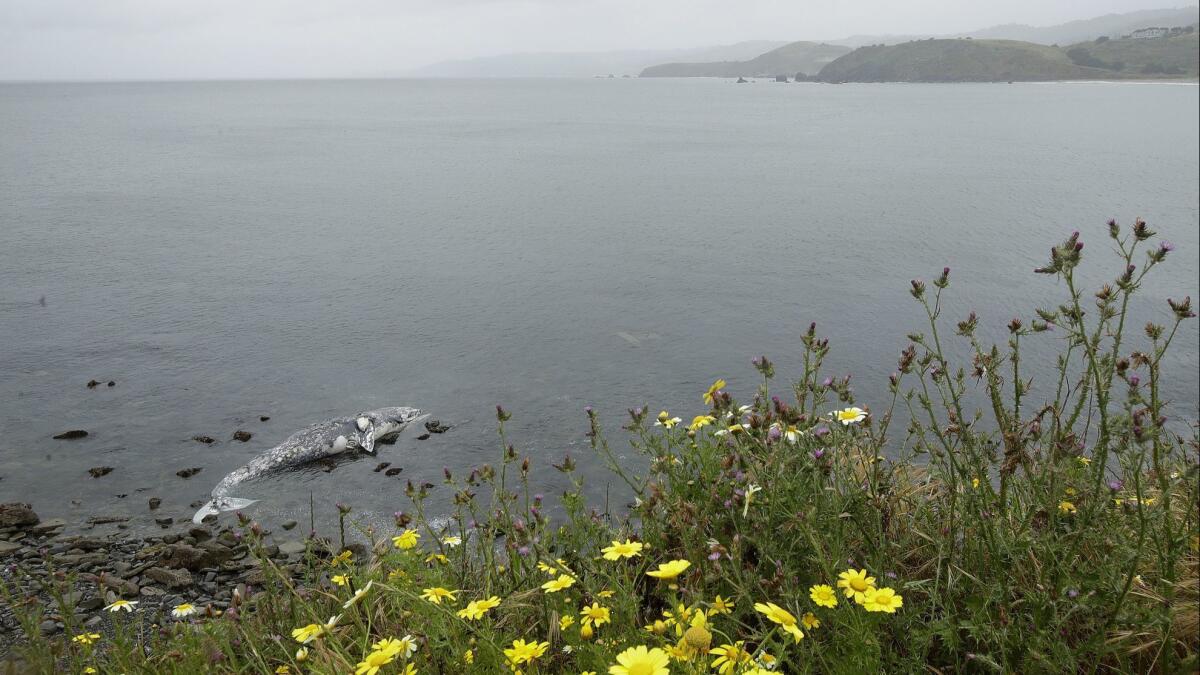
Most whales sink when they die or succumb in remote areas, so the sightings represent only a small fraction of the total number of deaths that may be occurring. Scientists said they expect to see whale deaths increase even more throughout the summer as the animals continue their migration from warm breeding lagoons in Mexico to icy feeding grounds in the Arctic.
NOAA’s investigative team will include gray whale experts, oceanographers and scientists who study the Arctic ecosystem, officials said.
“The significant die-off of these animals we’ve seen this year demands an investigation,” said Dr. Deborah Fauquier, a veterinary medical officer with the national fisheries service’s Office of Protected Resources in Silver Spring, Md.
Gray whales are starving to death in the Pacific, and scientists want to know why »
John Calambokidis, a research biologist who tracks gray whales in Washington state, served on the panel that recommended the “unusual mortality event” designation. However, he emphasized that the uptick hasn’t yet reached a level that threatens the entire population of gray whales along the West Coast, which is estimated to number around 27,000.
Calambokidis pointed out that the population rebounded from an unusual mortality event in 1999 and 2000 that was estimated to have resulted in about 6,000 whale deaths.
“This is really important to investigate, both to understand the scope of it and to better understand the causes, but I’m not alarmed,” he said. “We’re dealing with a population that overall has been very healthy and doing well.”
Scientists this year have seen dozens of gray whales showing signs of emaciation, with less muscle mass behind their heads.
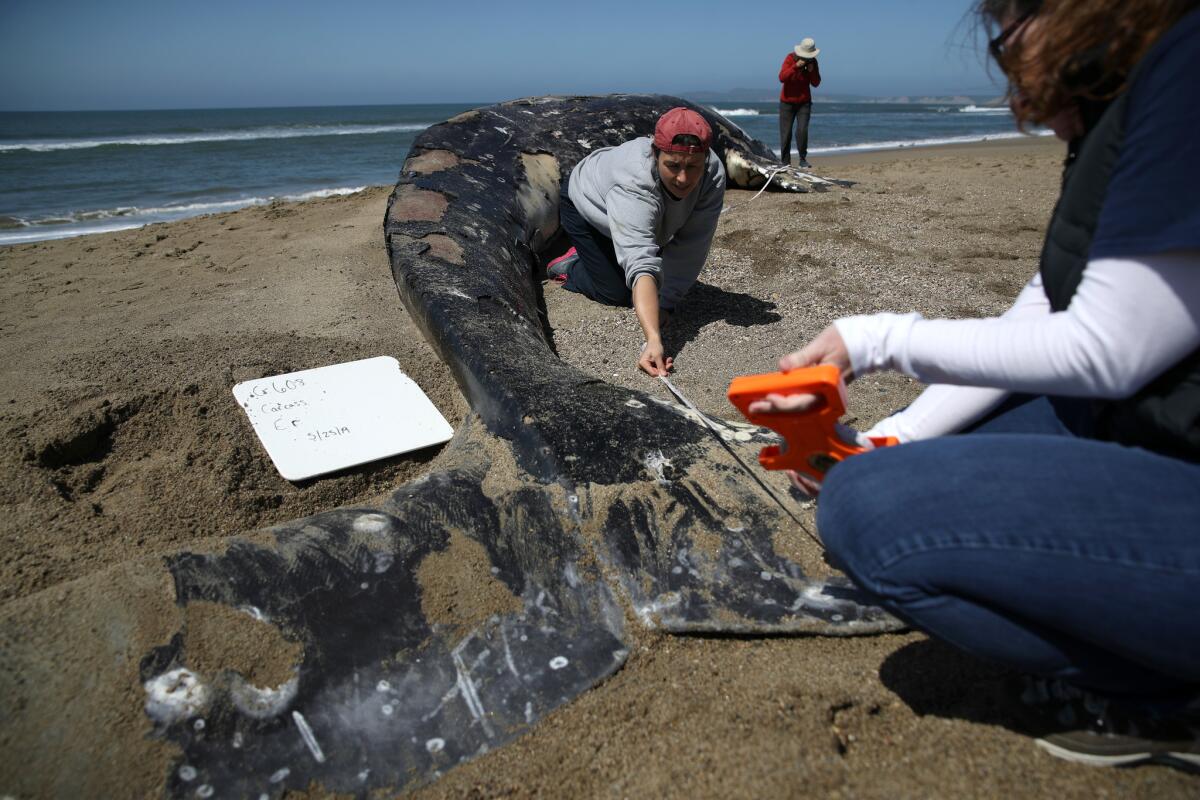
When gray whales begin to swim north in late winter — a migration that continues through the spring and summer — their bodies are already under nutritional distress because they haven’t eaten for months, said Dave Weller, a research wildlife biologist with NOAA’s Southwest Fisheries Science Center in La Jolla. But this year has been unusual.
“We expect animals to be on the thin side, but not necessarily emaciated,” he said.
Weller said he suspects the whales might not have gotten enough to eat last summer when they were in the Arctic.
Among other things, NOAA’s investigative team will look at whether ecological conditions in the Arctic region, including the retreat of sea ice, are affecting the whales’ food supply.
Sue Moore, a biological oceanographer at the University of Washington who served on the panel that designated the unusual mortality event, said scientists are studying the relationship between sea ice and the tiny crustaceans called amphipods that gray whales eat.
“The whales may have to shift to other prey, such as krill,” she said.
Fauquier said determining the cause of the gray whale deaths could take several months to a year, if not more. Scientists were never able to determine a cause for the die-off in 1999-2000, partly because they lacked diagnostic samples from the whales, she said.
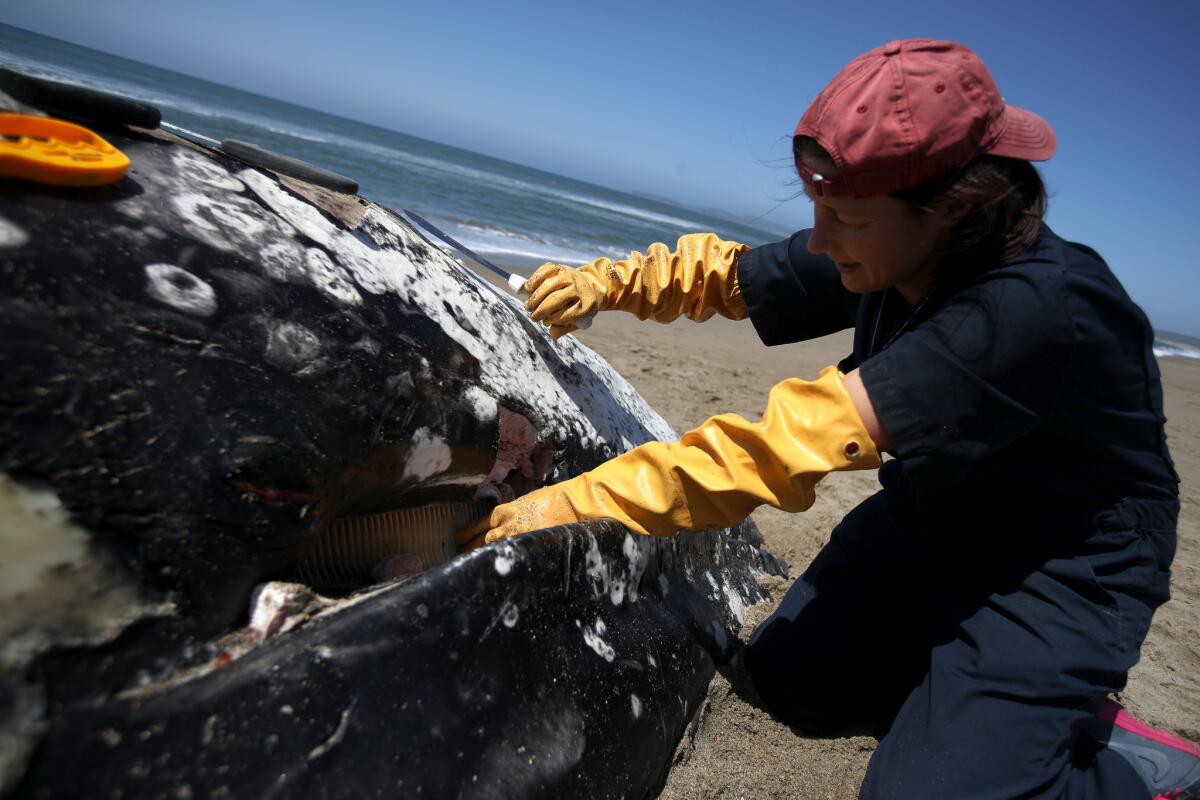
Back then, researchers conducted fewer than 10 necropsies of gray whales. This year, they’ve already conducted at least 20.
“We’ve been much more successful at being able to necropsy animals and collect samples for this event,” she said.
Fauquier asked the public to report sightings of dead or distressed gray whales to NOAA’s West Coast Marine Mammal Stranding Network hotline at (866) 767-6114.

